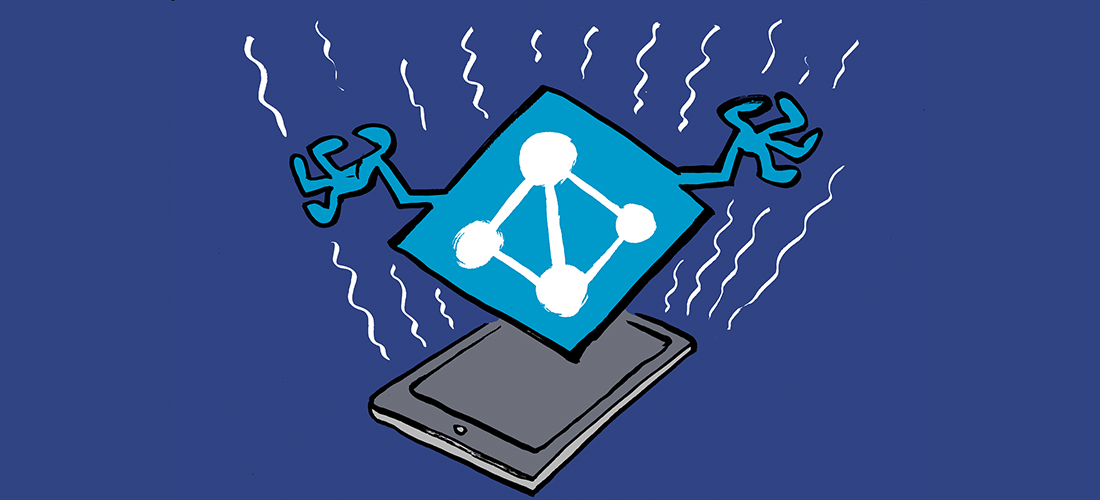Microsoft 365 Keeps On Changing
Every year brings a new set of technical advances. In the world of Microsoft 365, many different events, products, and innovations occurred during 2024. This article reviews some of the developments that attracted my attention for different reasons, usually because of the longstanding effect of the change on tenant operations. Everyone has their own priorities, and I am sure that some will disagree with my choice of what’s covered here. Feel free to describe your own concerns and observations in the comments.
Useful Upgrades for SharePoint and OneDrive
The Microsoft 365 Archive and Microsoft 365 Backup services both entered production in 2024. The most interesting move was Microsoft’s decision to move unlicensed OneDrive accounts into Microsoft 365 Archive and force tenants to pay for long-term storage of this data. It will be interesting to see how organizations cope with the new requirement to take out an Azure subscription to pay to store unlicensed OneDrive accounts. I expect that a substantial percentage of the affected accounts will be removed once tenants realize how the scheme works once it begins in January 2025.
SharePoint Online received intelligent versioning in late 2024. Introducing automatic versioning driven by intelligent algorithms is an excellent way to address the swelling amount of expensive SharePoint storage used for file versions. For now, the downside is that retention processing clashes with the removal of unwanted versions. Hopefully, Microsoft will find a way to solve that problem in 2025.
Exchange On-Premises Heads into Subscription Services
For Exchange, the big push is to get ready for Exchange Server Subscription Edition (SE), due in summer 2025. SE is the version that every on-premises customer will eventually run if they want to have a hybrid organization that’s connected to Exchange Online, so it’s an important development. On-premises organizations will hope that some of the innovation that’s been flowing into Exchange Online, like better message recall, will eventually show up in Exchange Server. It remains to be seen what version of SE past the first release (essentially a rebranding of Exchange 2019) will bring in the future.
Microsoft is keen to stop tenants abusing Exchange Online and will introduce a new External Recipient Rate (ERR) limit of 2,000 recipients per mailbox from October 2025. To provide a service to customers who need to send large quantities of email, Microsoft has two offerings: High-Volume Email (HVE) and Email Communication Service (ECS).
The High-Volume Email service is designed to send large volume of email within an organization with some limited capabilities to send external email. HVE is still in preview and is expected to reach general availability in mid-2025. If you’re looking for a service to send lots of external email, the Email Communication Service is a better option. ECS is an Azure pay-as-you-go solution that’s also built on top of Exchange Online.
To send email, you need an email client. The new Outlook for Windows (Figure 1) reached general availability in 2024. That doesn’t mean that the new Outlook is ready for prime time because that’s absolutely not the case. Instead, it’s Microsoft’s way of saying to customers that full support is available if you want to use the new Outlook.

I haven’t heard of any large organizations dumping Outlook Classic yet. The guarantee of support for Outlook classic until at least 2029 means that many are biding their time waiting for Microsoft to deliver essential functionality like solid offline access and PST support. The first iterations of these features are now available, but neither is at the required level.
If you run Outlook classic in a small or medium company with a Microsoft 365 business plan, be aware that Microsoft will switch Outlook classic users to the new Outlook automatically starting in January 2025. Users can switch back to Outlook classic. Even so, forcing the pace of change for small customers who don’t have the kind of IT resources found in enterprise organizations seems like a poor and unsympathetic practice.
Improvements in the Teams User Interface
For Teams, 2024 was all about building on the general availability of the Teams 2.1 client in October 2023. The old (original) client is now retired, and the new platform is being steadily enhanced. I’m not sure if the new client meets the expectations for memory usage and speed, but I hear fewer complaints about Teams being a pig, so that’s a positive point.
Some of the enhancements get mixed reactions. The new chat and channels interface and the move to hide unused channels are in this category. Even after using the new chat and channels interface for several months, I still find myself switching back to the original interface. I’m assured by the product architects that Microsoft telemetry shows that the new interface is more effective for the majority of users. I guess time will tell. Some more changes are coming to the interface that I think will meet with universal approval, like resizable windows (due in January 2025).
Copilot Continues to be Everywhere
If 2023 was the year for Copilot announcements, 2024 was all about Copilot appearing in as many products that Microsoft could lever AI into. Given the staggering financial investment made to build out the Microsoft datacenter infrastructure (reported as $19 billion in FY24 Q4), it’s entirely understandable that Microsoft should want to generate a return by selling Copilot licenses, especially to the installed base of 400-odd million Office 365 paid seats.
Microsoft hasn’t revealed any hard numbers to show how successful they’ve been in convincing customers to buy expensive $360/year Copilot for Microsoft 365 licenses. At the analyst briefing for Microsoft’s FY24 Q4 results in August, Satya Nadella said that Teams Premium had 3 million seats, or less than 1% of the overall Teams installed base of 320 million monthly active users. Microsoft has put a lot more marketing muscle behind Copilot for Microsoft 365 and I suspect that the percentage penetration into the installed base is higher than for Teams Premium. Five percent would be about twenty million seats. At list prices, that’s only $7.2 billion of license income annually. To justify the current level of investment, Microsoft needs to drive the percentage of users with Copilot for Microsoft 365 much higher.
Many organizations are experimenting to discover if they can extract sufficient value from the current raft of Copilots. New APIs are becoming available to help organizations understand what people do with Copilot or simply which of the various Copilots are most popular. Depending on raw Copilot interaction data will lead to an inflated view of usage because the data includes events logged for automatic Copilot interactions like the generation of summaries for Word documents. It’s still great to have the APIs to gain access to interaction data, even if it’s important to filter what comes back.
Advances like Copilot pages and Custom Agents in SharePoint Online have helped to make the case for generative AI, but it can still be a struggle for businesses to get sufficient control over confidential data to make it feasible to permit large-scale use of AI by users. Copilot for Microsoft 365 is, after all, extremely good at finding information. Speaking about things that are extremely good, I’ve enjoyed using GitHub Copilot to write PowerShell scripts. This Copilot is well worth its $10/month license fee.
It’s a safe prediction to say that you’ll hear much more about Copilot in 2025. Every engineering group has its marching orders to do as much as possible to support the Copilot initiative. I’m sure that all the effort is worthy, but it would be nice if a small percentage of the engineering resources dedicated to the pursuit of Copilot excellence could fix some of the other issues that exist in Microsoft 365.
Some February Software Retirements
In addition to product launches, product retirements also happen inside Microsoft 365. For example, Microsoft retired Office Delve in December 2024, and announced that Viva Goals will retire in December 2025. Goals is the second solution in the Viva suite to be canned with Topics due to be retired in February 2025. Some solutions reappear in a different guise. For instance, some of the functionality in the Cortana Scheduler offering (closed in 2023) is like what happens when Copilot for Outlook schedules a meeting.
Two upcoming changes are worth noting because both will take effect from February 2025. The first is the retirement of the App Impersonation RBAC role in Exchange Web Services (EWS). If you have apps that use this feature to gain access to user mailboxes, the apps will stop working when Microsoft retires the functionality. Instead of using EWS, Microsoft recommends that apps use Graph APIs instead and RBAC for Applications to limit app access to sensitive mailboxes. Of course, switching code from EWS to Graph APIs is not automatic and some notable gaps in API coverage exist (like dealing with retention tags for email), but the change must be made.
Legacy Exchange tokens are used by Outlook add-ins to sign into Exchange mailboxes. Microsoft will begin removing support for legacy Exchange tokens in February 2025 and suggested that developers use a technology called Nested App Authentication (NAA) to build add-ins instead. Some add-in developers are on the ball and have upgraded their code, but given the history of Outlook add-ins, there might be a lot of old software in use that was built in-house or by external developers who are no longer in business. Either way, it’s time to check Outlook add-ins.
People
People also move on in their lives and careers. Alex Weinert, VP for Microsoft Identity Security, has decided to take some time out before finding his next challenge. Among other initiatives, Alex led the charge to embrace multifactor authentication within Microsoft 365 and the use of strong authentication methods like passkeys and the Microsoft authenticator app. Alex presented at the TEC 2022 conference and did a great job of explaining the challenges involved in defending a massive cloud infrastructure. On a human level, he also took time to help conference attendees, including assisting one who needed to rebuild her PC after malware penetration. Practical365.com has enjoyed learning from Alex and wishes him well for the future.
More Change in 2025
All we can predict for 2025 is that ongoing change will continue. Depending on the subscriptions (licenses) owned by a tenant, administrators might have to consider over 600 individual change notifications posted in the Microsoft 365 admin center. That’s enough to keep anyone occupied, and it will certainly keep Practical365.com busy covering what we consider the most important topics in a very practical and forthright manner.





Thanks Tony.
With regards to…
“Microsoft is keen to stop tenants abusing Exchange Online and will introduce a new External Recipient Rate (ERR) limit of 2,000 recipients per mailbox from January 1, 2025.”
…that has been delayed by 6 months. Was quite alarmed seeing that!
It sometimes happens that the text of posts lined up for a certain day are overtaken by events, like Microsoft deciding on 16 December to push the dates out for ERR. Such is life! Text updated.